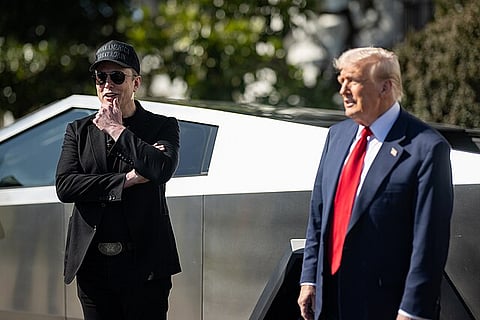

Elon Musk formally launched the “America Party” over the weekend, directly challenging former ally Donald Trump after the president signed a $3.3 trillion tax bill Musk called a “disgusting abomination”. Trump dismissed the move as “ridiculous,” insisting third parties “never worked” and only create “chaos”. Analysts warn the party could fracture Republican support in 2026 midterms, where the GOP holds a five-seat House majority and a 50-50 Senate (with Vice President JD Vance as tiebreaker).
Musk plans to “laser-focus” on flipping 2-3 Senate seats and 8-10 House districts where incumbents backed Trump’s deficit-expanding bill 9. His strategy leverages “extremely concentrated force” in competitive races, potentially acting as a decisive swing bloc in a divided Congress. With Musk’s $405 billion fortune funding primary challenges against pro-bill Republicans (e.g., targeting Kentucky Rep. Thomas Massie), the GOP faces internal warfare ahead of midterms.
The America Party aims to attract young, tech-savvy men and disaffected independents and groups polling shows favor Musk over traditional Republicans. However, Musk’s net favorability (-18%) lags behind Trump’s (-6.6%), and his Wisconsin Supreme Court spending failure ($20 million for a losing candidate) exposes his electoral limitations. Treasury Secretary Scott Bessent bluntly noted: “DOGE’s principles were popular... but Elon was not”.
Third parties face steep systemic barriers: complex ballot-access rules across 50 states, minimal historical success (only one House seat won since 1950), and a tendency to act as “spoilers”. While Musk’s resources dwarf past efforts (e.g., the failed No Labels movement), experts estimate needing $100 million+ and 10 years to build viability. Short-term, the party’s likeliest impact is siphoning votes from Republicans in swing districts, potentially handing Democrats narrow wins.